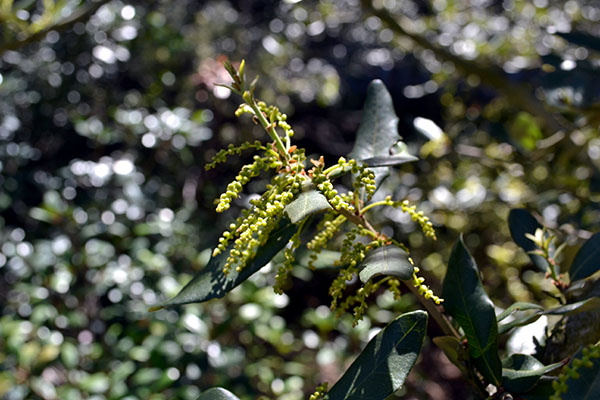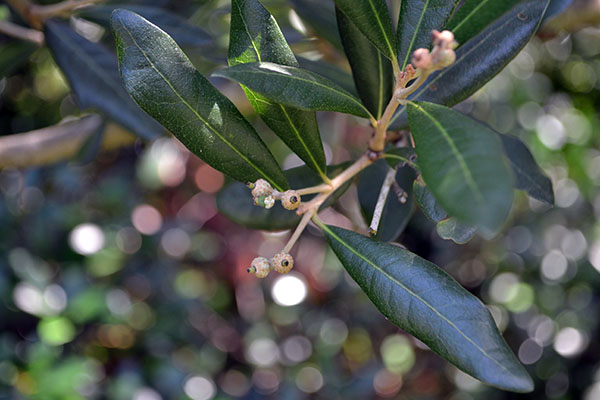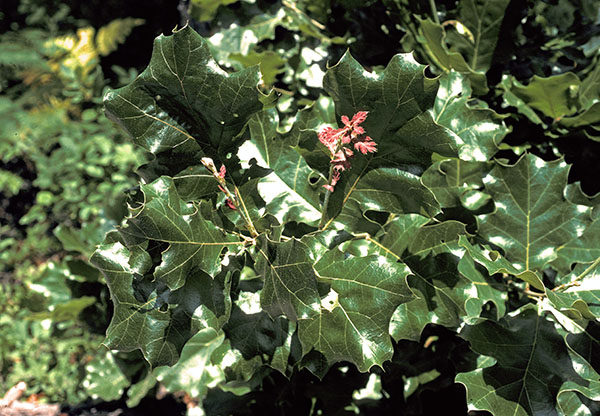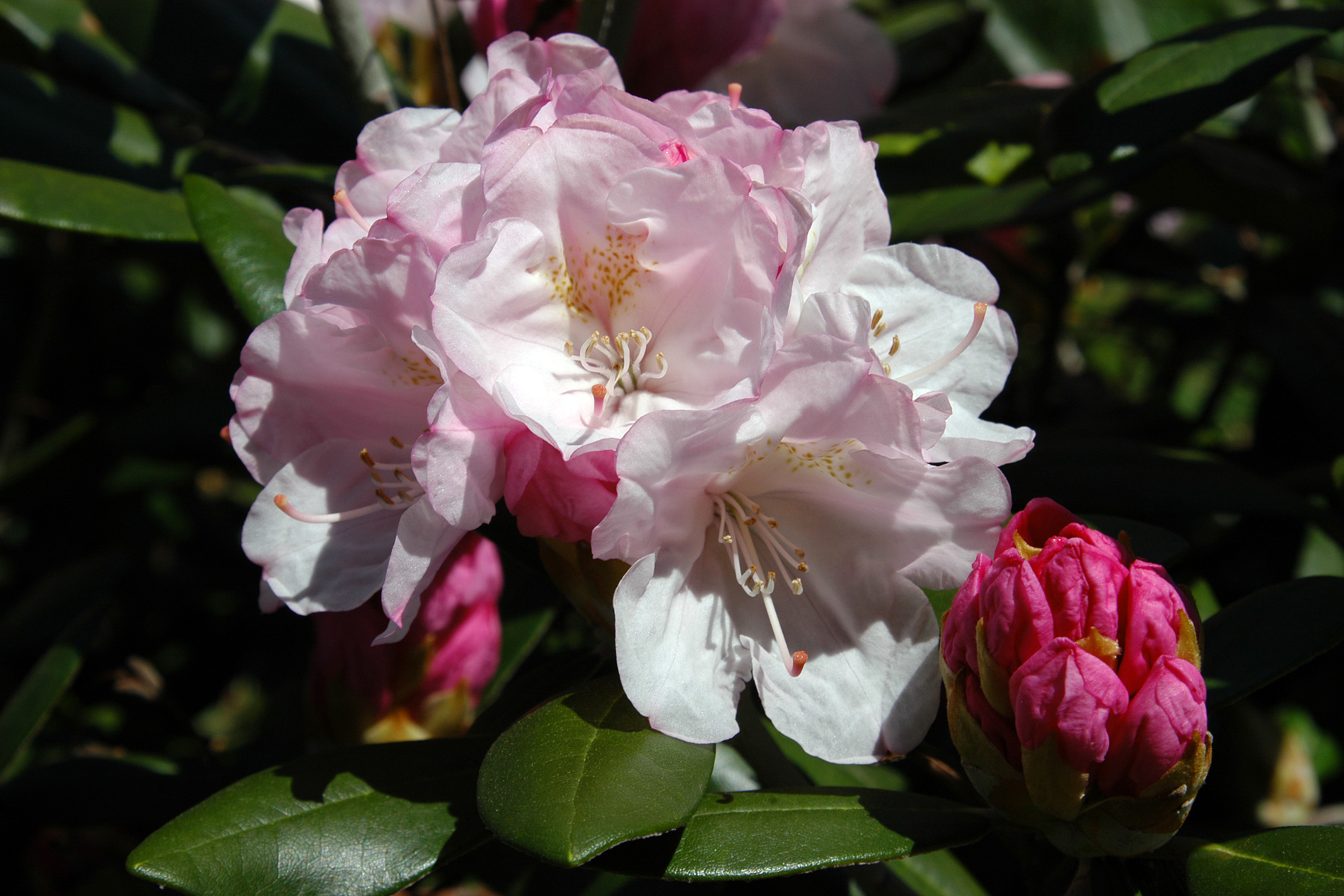Quercus virginiana
Live Oak
Virginia to Florida, west to Oklahoma and Texas into Mexico
Massive tree of 80 feet tall by 100 feet wide when fully mature. It grows huge horizontally spreading branches that sometimes grow parallel with the ground.
Sandhills and sandy woods, very salt and sun tolerant
Grows well in sandy areas, shape almost resembles Ilex. Live Oak is a extremely popular in large landscapes in the southeastern United States where it is native. It has become an icon of the Old South where it grows in front of old plantations and estates and in dense forrests covered with Spanish moss. Further north, it doesn't reach the massive stature it does in the south because of colder temperatures, but is still a worthy large landscape plant.
Alternate, simple, evergreen, entire. Could be confused for Q. phellos during growing season, but acorns and buds are distinct enough to ID.
Buds are imbricately scaled, reddish-brown and glabrous
Grows blocky almost like Diospyros virginiana in old growth, darkens in old growth but new stems are lighter.
Insignificant monoecious yellowish-green flowers in separate male and female catkins appear in spring.
Acorns are grouped 1 to 5 on a single stalk, up to 1 inch long and enclosed by an ellipsoidal cap. :
Cuttings treated with 10000 ppm KIBA







